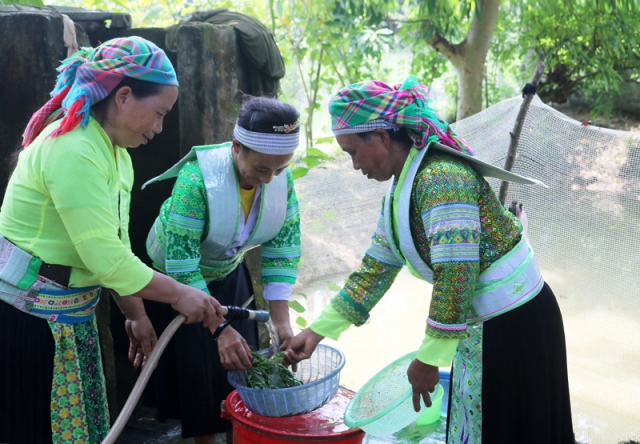(13th Congress) - The northern province of Thai Nguyen is home to nearly 400,000 ethnic minority people, accounting for 29.87% of the province's population. In recent years, the province has paid special attention to boosting socio-economic development in ethnic minority areas with many practical and effective solutions.

Ethnic mimority people get access to safe water for daily use. (Photo: molisa.gov.vn)
From 2013 to 2020, the province spent over VND6.5 trillion on building the power, road, school, medical station and communal house systems; transferring production technologies; and supporting farmers with seedlings and breeding animals. Additionally, the province has focused on investing in the development of education and health care, creating conditions for ethnic minorities to access public services, contributing to raising the people's intellectual level, the level of cultural enjoyment, improving the quality of life, and eliminating outdated practices among communities.
Specific policies on investing in ethnic minority areas have been promptly issued, including a project on boosting socio-economic development, stabilizing production and living conditions in villages inhabited by H'Mong ethnic minorities, using more than VND100 billion to build roads, supply electricity, water supply, support production, animal husbandry, and plant fruit trees. It has also maintained 8% of ethnic minority students in boarding schools who receive food support; giving medical insurance support to poor ethnic minority households; and encouraging factories and enterprises to prioritize recruiting ethnic minority workers.
As a result, people's lives have been significantly improved, specifically, the rate of poor households in ethnic minority areas has decreased sharply, from 19.2% in 2016 to 5.51% at present. All hamlets have access to electricity from the national grid; more than 90% of ethnic minority households have access to hygienic water; while all inadequate classrooms have been rebuilt.
The resolution of the 20th Thai Nguyen Provincial Party Congress, term 2020 - 2025, identifies that the province will pay special attention to building new-style rural areas, boosting sustainable poverty reduction and socio-economic development in ethnic minority areas, narrowing the gap between the rich and the poor, by fully and promptly implementing social policies, creating jobs, reducing poverty, and improving the material and spiritual life of the people, especially in ethnic minority and mountainous areas./.
Compiled by BTA